You can see a few steps from the pictures.
Basically, there is a bottom made of wood. I will layout the sketch later with all dimensions I used. but it's pretty straightforward.
A sheet of plywood (105x100), on it is glued support for each note (each note has 15cm width).
on the side, the supports are 1.3 cm width, and for each note, the supports are 2.5 cm. The height is 1cm.
The notes will be 90 cm in height, so there is a 10cm gap for the electronic on top of the octave.
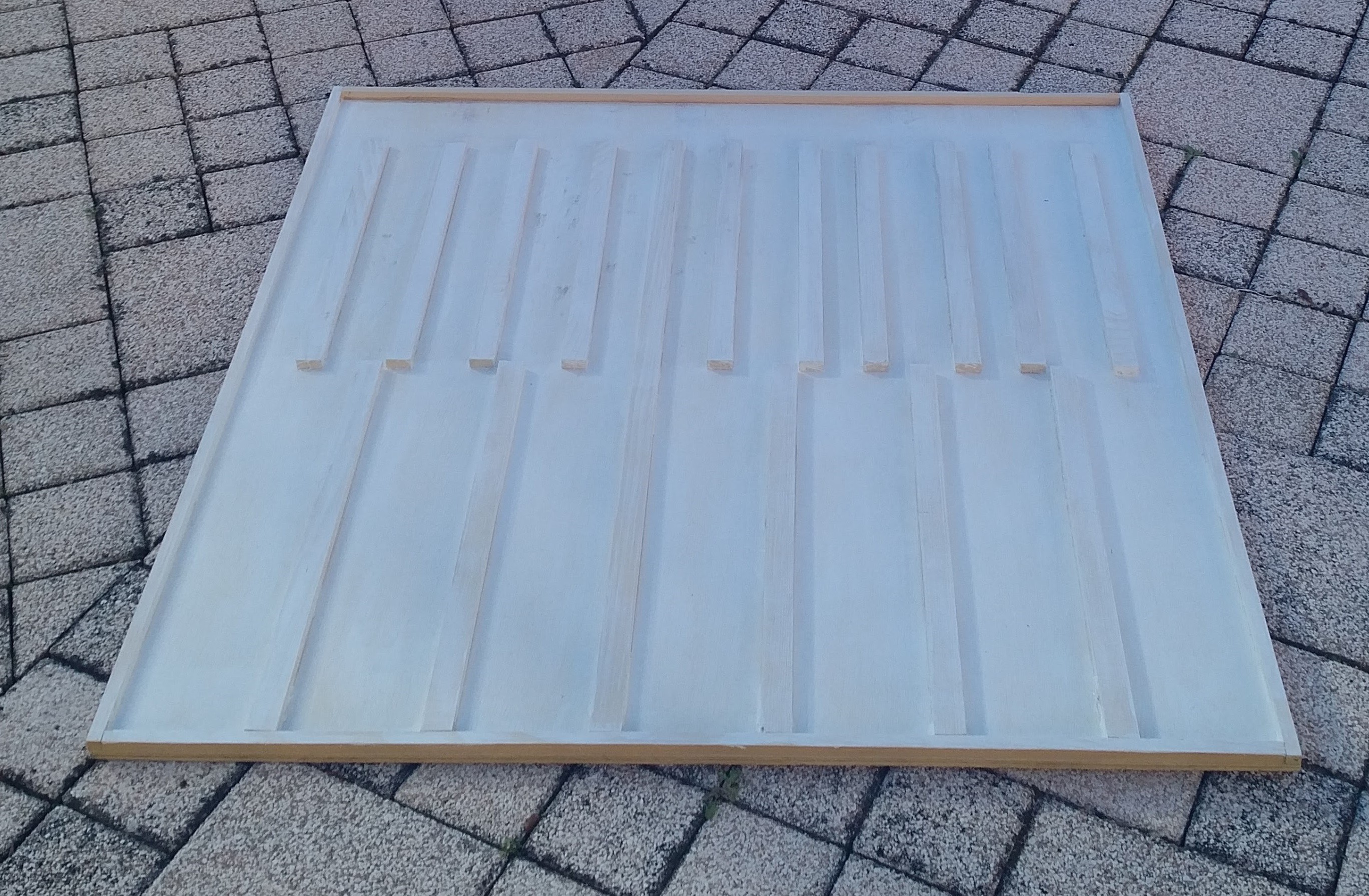

Then we need to add leds. These are simple RGB non adressable 5050 led strips. You need about 25 meters for each octave. This is with the Acrilyc the most expensive part of the piano, but thanks to alibaba, I was able to source 200 meters for a very good price (to build 8 octaves).

BTW, you can see the acrilyc in the background with the white sheets and already cut black sheets
Then we need to add cloth felts on each support to attenuate the noise made by the jumps on the acrilyc.
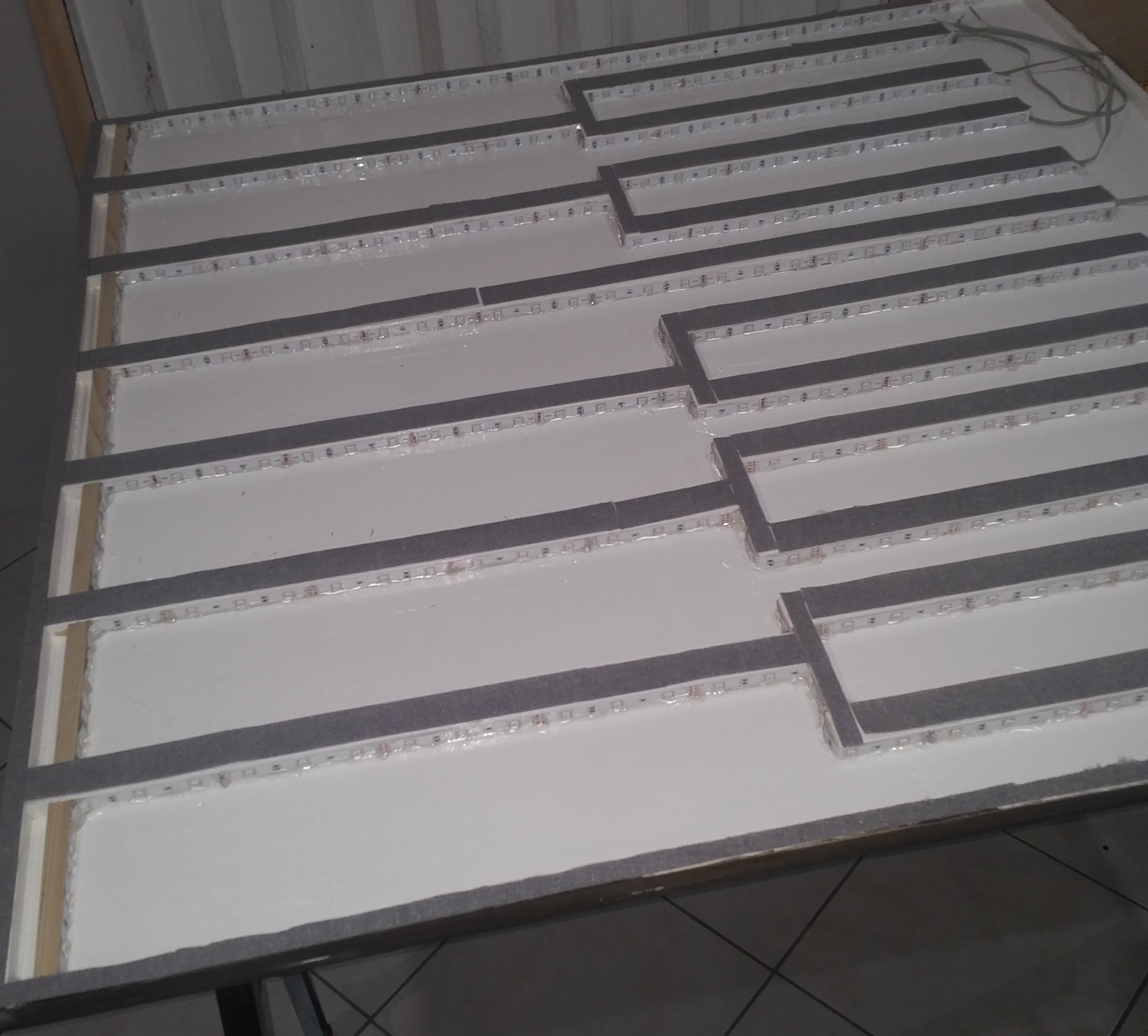
You can also see I already soldered the wire for LEDs.
On the picture, you can see that the leds are not going to the lower part. It's because I'll glue wood on the Acrilyc and use this to fix the acrilyc on top of this.
Bottom is done now. moving to the acrilyc part.
I don't really have pictures of the process. I simply mark a cut in the acrilly (1 mm depth) to create the white notes, and glued the black ones on top of the white acrilyc.
here it is :
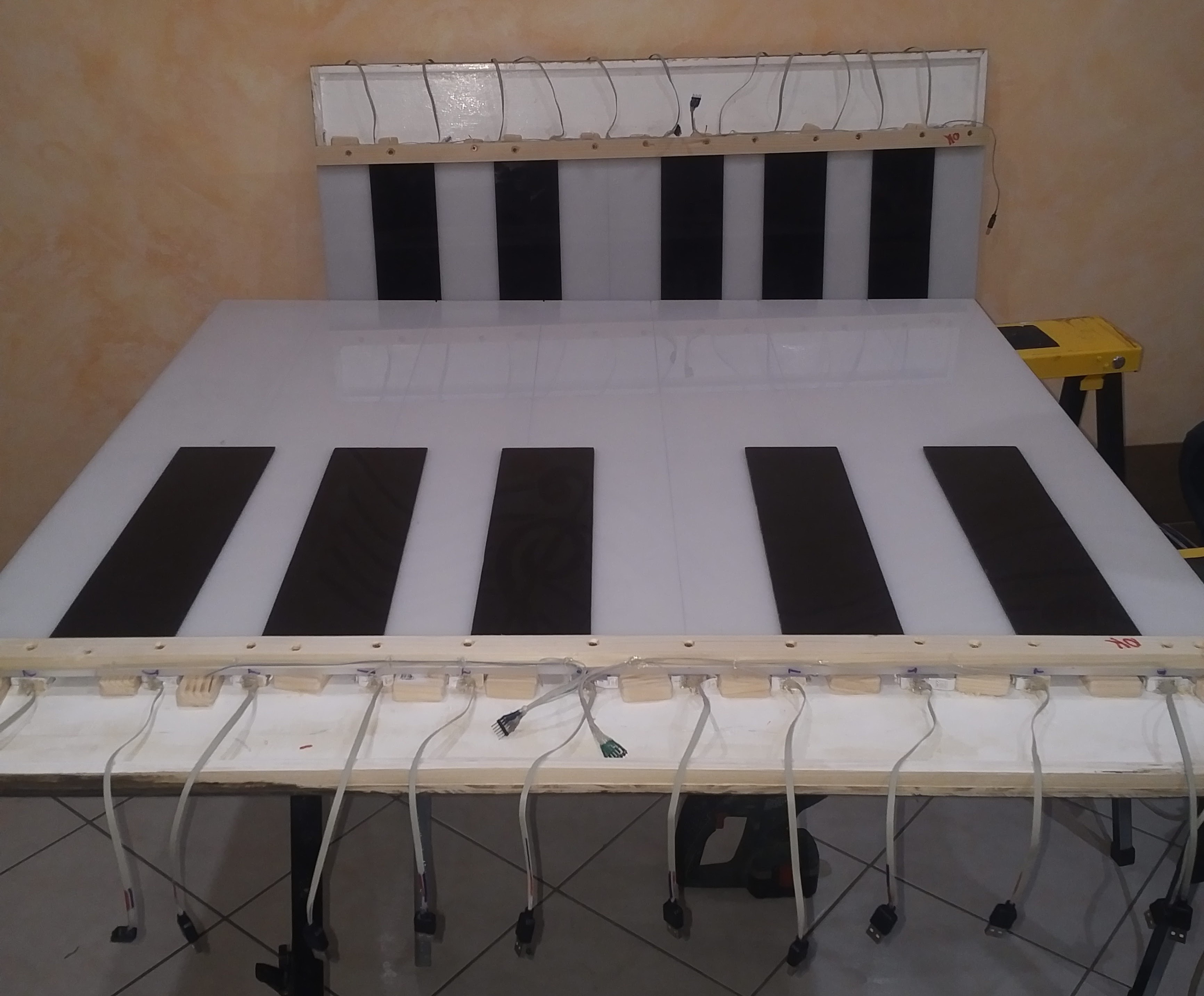
You can see on the picture, I used USB connectors for led strip connections (4 wires).
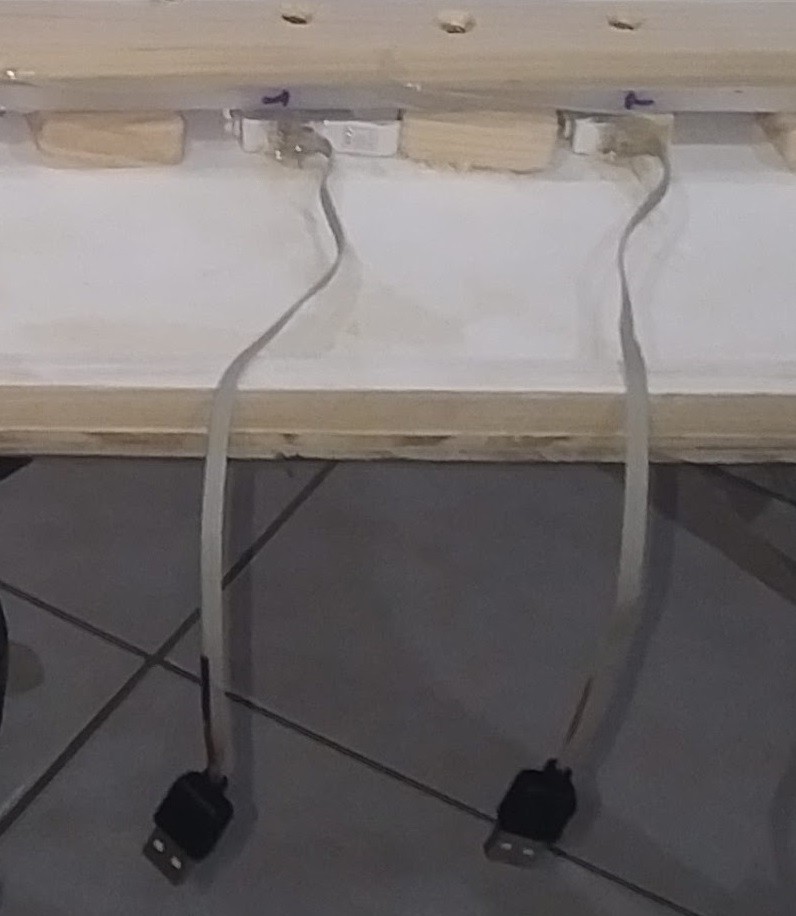
I forgot to mention, I also glued on the bottom of the acrilyc (not visible here, the silver fabric that will be used for detection. Each note as its own sheet cut to size. You can also see the wires in the center of the picture.

and the full thing. Only first octave had acrilyc protection removed hence the strange color, but you can see the cut line on the acrilyc giving a sense of real piano with notes instead of a flat sheet.
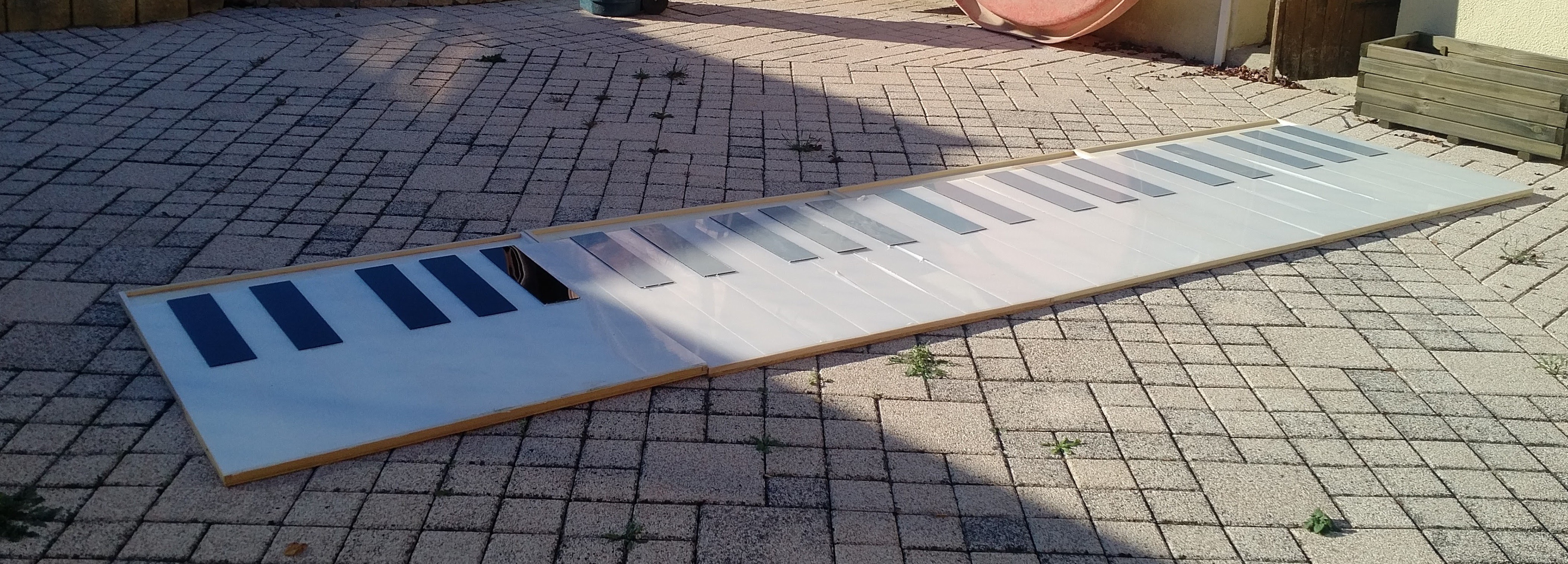
 Frederic
Frederic
Discussions
Become a Hackaday.io Member
Create an account to leave a comment. Already have an account? Log In.